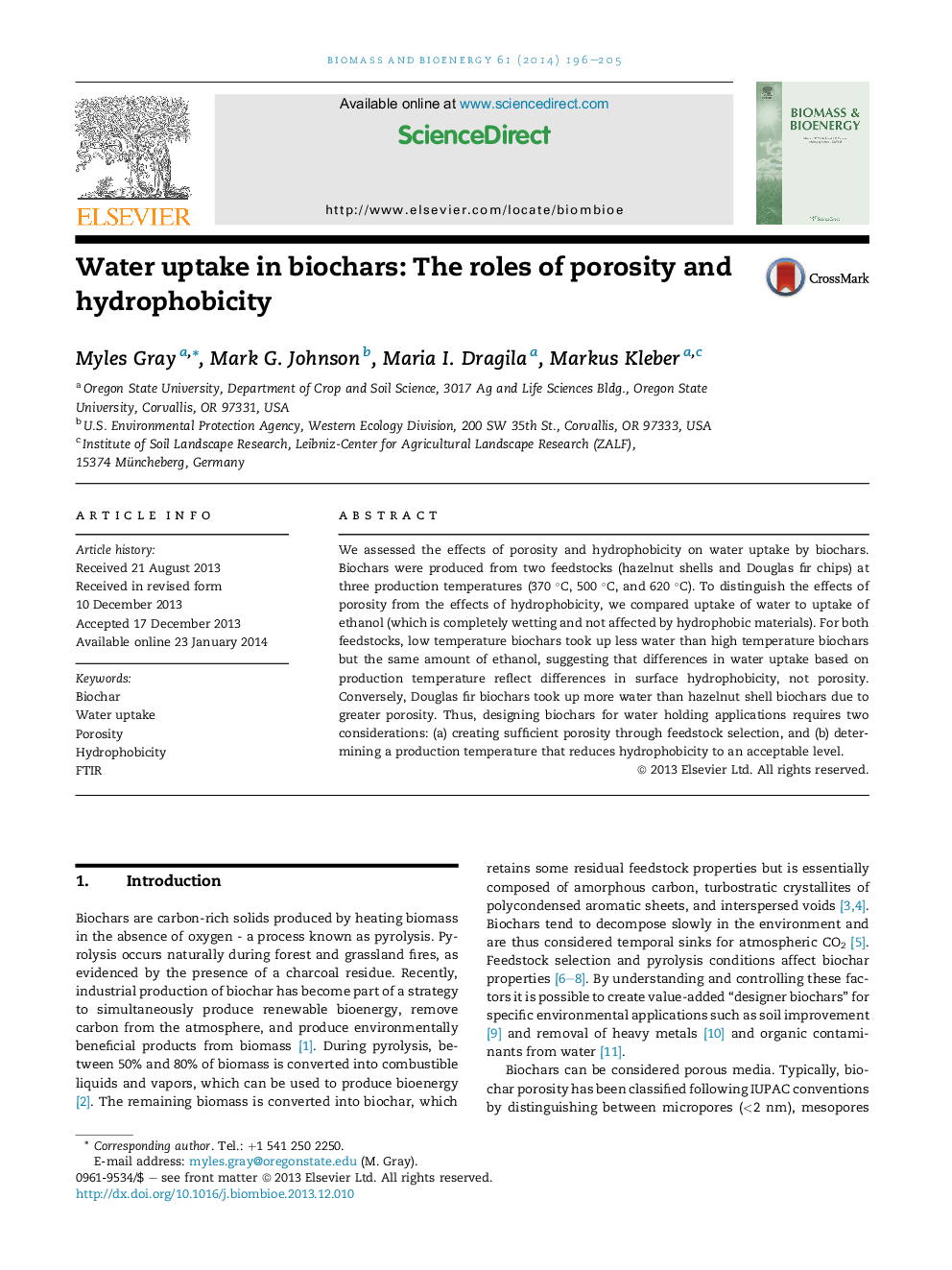| Article ID | Journal | Published Year | Pages | File Type |
|---|---|---|---|---|
| 676961 | Biomass and Bioenergy | 2014 | 10 Pages |
•Porosity of biochars increases slightly with increasing production temperature.•Water uptake by biochars depends on feedstock and production temperature.•Residual porosity depends on feedstock, providing substantial volume for water uptake.•Decreased hydrophobicity at higher production temperatures allows greater water entry.
We assessed the effects of porosity and hydrophobicity on water uptake by biochars. Biochars were produced from two feedstocks (hazelnut shells and Douglas fir chips) at three production temperatures (370 °C, 500 °C, and 620 °C). To distinguish the effects of porosity from the effects of hydrophobicity, we compared uptake of water to uptake of ethanol (which is completely wetting and not affected by hydrophobic materials). For both feedstocks, low temperature biochars took up less water than high temperature biochars but the same amount of ethanol, suggesting that differences in water uptake based on production temperature reflect differences in surface hydrophobicity, not porosity. Conversely, Douglas fir biochars took up more water than hazelnut shell biochars due to greater porosity. Thus, designing biochars for water holding applications requires two considerations: (a) creating sufficient porosity through feedstock selection, and (b) determining a production temperature that reduces hydrophobicity to an acceptable level.
